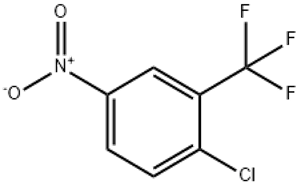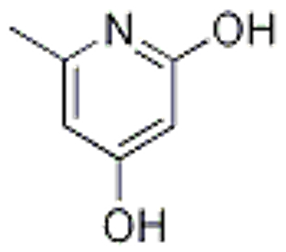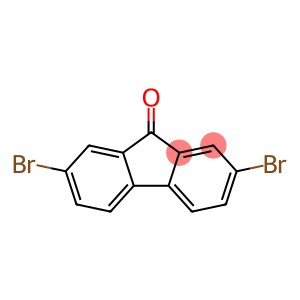2-Chloro-5-nitrobenzotrifluoride (CAS# 777-37-7)
| Risk Codes | R22 – Harmful if swallowed R36/37/38 – Irritating to eyes, respiratory system and skin. R20/21/22 – Harmful by inhalation, in contact with skin and if swallowed. |
| Safety Description | S26 – In case of contact with eyes, rinse immediately with plenty of water and seek medical advice. S36/37/39 – Wear suitable protective clothing, gloves and eye/face protection. S36 – Wear suitable protective clothing. |
| UN IDs | 2810 |
| WGK Germany | 3 |
| TSCA | Yes |
| HS Code | 29039990 |
| Hazard Note | Irritant |
| Hazard Class | 6.1 |
| Packing Group | III |
Introduction
2-Chloro-5-nitrotrifluorotoluene is also known as 2,5-dichloro-3-nitrotrifluorotoluene. The following is an introduction to its properties, uses, manufacturing methods and safety information:
Quality:
- Appearance: Colorless or white solid
- Solubility: Soluble in organic solvents and soluble in ethanol and ether solvents.
Use:
It can be used in the synthesis of some important organic compounds, such as fluorobenzene, directing agent and heterocyclic compounds.
Method:
2-Chloro-5-nitrotrifluorotoluene can be synthesized by fluorination of 3-nitrophenol and thionyl chloride on silica gel. The reaction conditions can be carried out at high temperatures and an excess of trifluoromethane is used as a fluorinating agent.
Safety Information:
- 2-Chloro-5-nitrotrifluorotoluene is an organofluorine compound with certain toxicity. Appropriate precautions should be taken during operation, including wearing protective eyewear, gloves and appropriate protective clothing.
- Avoid inhaling its dust or solution and avoid direct contact with skin and eyes.
- When stored and disposed of, it should be placed in an airtight container and kept away from ignition and oxidizers to prevent fire or explosion.
- Care should be taken when using in poorly ventilated areas to avoid the accumulation of harmful gases.
- Anyone who comes into contact with the compound should seek medical attention immediately with the packaging or chemical label so that a physician can make an accurate diagnosis and treatment.








